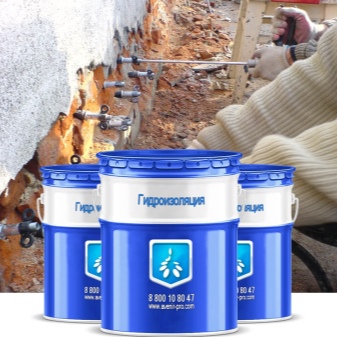Features of polyurethane resin and areas of its use

Polyurethanes are a family of polymers that are formed by linking a chain of simple, repeating molecules. One of the representatives of the class is polyurethane resin.


What it is?
Polyurethane resin is a synthetically produced sticky substance. It is an industrial product used in the production of rubber, pharmaceuticals and more.
To better understand what it is, you need to know the connections.
Isocyanate is a compound made up of nitrogen, carbon and oxygen. When it is exposed to hydroxyl, a compound containing hydrogen, a urethane bond is formed. Diisocyanate is a compound containing two isocyanates, so they also react with hydrogen.
Polyols are basically alcohols that contain more than one hydrogen atom.


The production of a polyurethane resin typically involves a reaction between a polyether polyol and a diisocyanate such as toluene diisocyanate.
Heat or catalysts are also needed to complete the process, and when they are added, the substance takes on its final and irreversible form. This means that it cannot be deformed even if exposed to heat again.
Polyurethane resin is considered versatile because it can be used to make a variety of products, from inks to plastics. This became possible because the material can change its properties under different exposure options.
It is produced in liquid form, but can be poured into a mold. The substance has resistance to oils, chemicals, and has good durability.


Other benefits include:
- excellent chemical resistance, in particular to alkaline environments;
- very high tensile, compressive and flexural strength;
- low shrinkage during hardening;
- excellent electrical insulation properties;
- excellent corrosion resistance;
- high degree of resistance to physical stress;
- the possibility of hardening in a wide temperature range.
Disadvantages:
- the effect of ultraviolet radiation is negatively reflected;
- cannot be used with organic solvents.

Views
Polyurethane resin can be two-component and one-component. If we talk about the assortment on the market, then there are epoxy and hydroactive injection. The composition of each type is different, therefore the scope of application is also different.
Prepolymers are the basis for the creation of one-component substances.
Among their distinctive features:
- an increase in volume when interacting with liquids;
- low viscosity.


To work with the resin, you do not need to purchase additional equipment and mix the components. The reaction speed is high.
The product fills even the smallest cracks quickly and easily. The resin has found wide application in the field of making filters.
Hydroactive polyurethane is the base used to create a one-component product. Differs in a short period of foaming.
It is ideal for repairing leaks. Upon contact with liquid, the material increases in volume 40 times. The resin is pumped in with special equipment - a pump. Precisely because it has a low viscosity, even microcracks are filled.
If you want to create a tight seal, characterized by closed pores, then you should use a one-component resin.


If a leak has formed with an active inflow of water, then a two-component resin is well suited.
A good bond is created with materials such as concrete, brick, natural stone. With the help of the composition, building structures are also connected when tunnels are being built or drilling operations are underway. The resin can be used at temperatures from -10 to + 45 C.
Epoxies are thermosetting polymer resins in which the molecule contains one or more epoxy groups. There are two main types of epoxy resins: glycidyl and non-glycidyl.
Glycidyl: glycidylamine, glycidyl ether. Non-glycidyl epoxy resins are either aliphatic or cyclo-aliphatic resins.
One of the most common glycidyl epoxy resins is formulated using bisphenol A (BPA) and synthesized by reaction with epichlorohydrin. Another commonly used type is known as novolac epoxy.

Applications
Resins are used not only for filling tracks. Some types of goods are made known to us:
- pressure vessels;
- pipes;
- missile bodies;
- recreational equipment;
- insulator rods;
- boom shafts;
- aircraft parts;
- skis and snowboards;
- printed circuit board;
- bicycle frame;
- hockey stick.



Of course, one of the main areas where polyurethane resin is used is in the field of construction and renovation work.
With the help of the material, the rehabilitation of structures located underground is carried out.
The voids in the foundation can be easily removed with this tool. In addition, it is a unique and high-quality material for waterproofing.
It is also worth noting that polyurethane is a plastic material that exists in various forms:
- insulation of refrigerators and freezers;
- insulation of buildings;
- car parts;
- adhesives;
- rollers and tires;
- composite wood panels;
- shoe sole.


Speaking specifically about coatings that are made on the basis of polyurethane resin, they all have high wear resistance and strength. In addition, they are praised for their excellent adhesion, toughness and elasticity.
It is an excellent waterproofing agent that is unaffected by solvents and oils. Microorganisms do not adversely affect polyurethane resins.
The cracks into which the composition is fed through the injection hoses are completely filled. In this way, you can carry out the reconstruction of the foundation.
For the features of polyurethane resin, see the video.













The comment was sent successfully.